If you love all things blackened like blackened fish and blackened chicken, I’m gonna show you how to whip up the very thing that makes it so darn irresistible: the best Blackened Seasoning recipe ever. No need to head to the grocery store spice aisle when you can throw this mixture together in less than 5 minutes. I guarantee a sprinkle of this blackened seasoning will deliver big and bold flavors each and every time.
This post may contain affiliate links. Read our disclosure policy.
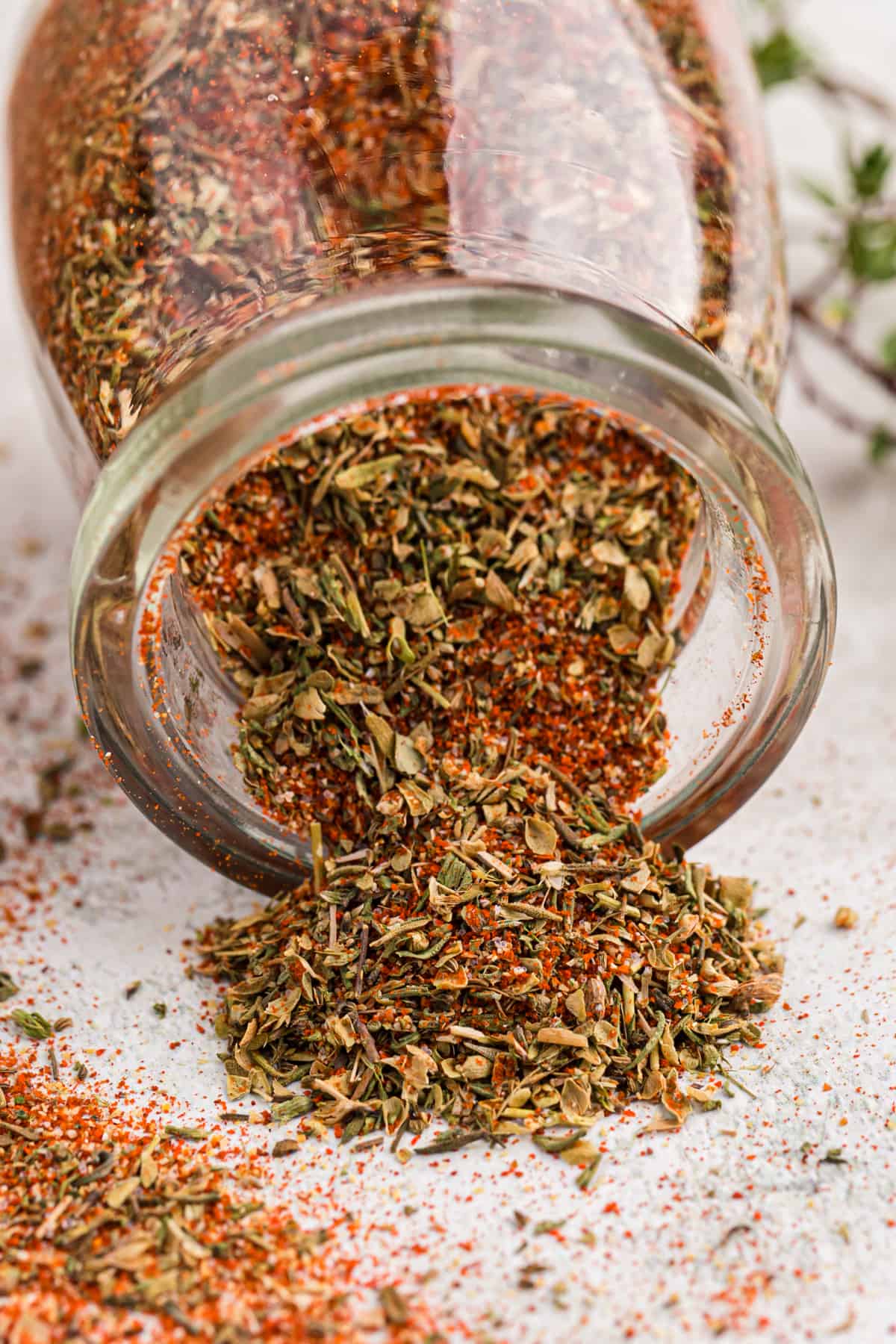
My first experience with blackened seasoning was on a seared catfish in New Orleans. Let me tell ya. That baby was spiced up right ya dig? Since then, I’ve been hooked on it. I even bought a few brands in the spice aisle to try and re-create the original charm but I was a bit turned off by all the preservatives and additives. I decided I could make my own version at home, and let’s just say I was right. It’s cost-effective, easy to customize, and way more flavor-intense! It is sooooo good y’all! Whether it’s on fish, chicken, or shrimp, the combo of these spices will taste out of this world!
This is my go-to blackened seasoning recipe but feel free to switch it up based on your own taste preferences. Dabble with the ratios and do you boo.
What is blackened seasoning?
Blackened seasoning, also known as blackening seasoning, is a blend of peppers, herbs, and other spices. Most versions add ingredients like cayenne, paprika, garlic, onion, pepper, oregano, thyme, and salt.
It’s mostly used in the blackening cooking process where it coats a butter drenched protein that’s then seared in a super hot cast iron skillet. The result is an outside that’s got a darkened crisp flavorful crust and an inside that’s juicy and tender.
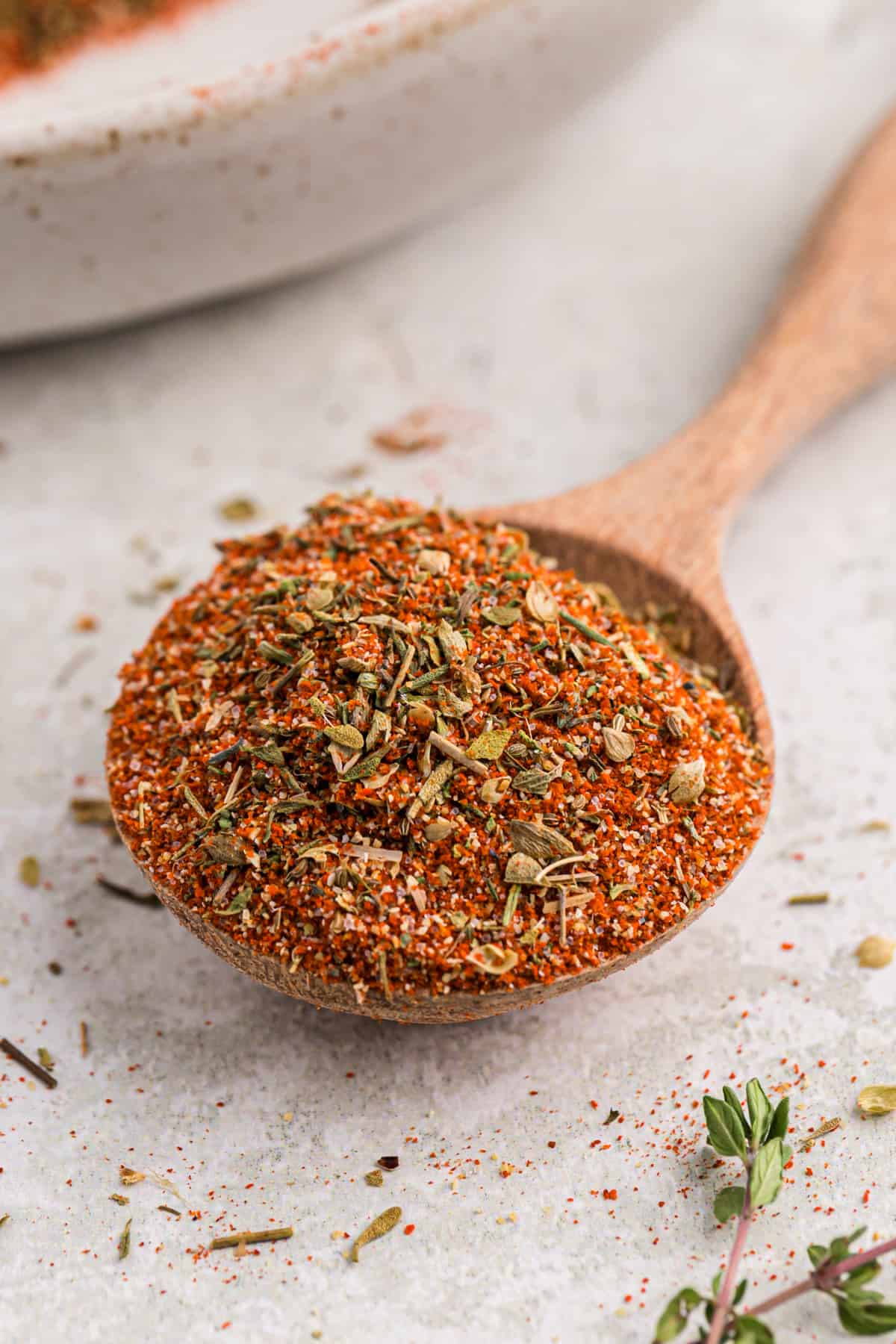
The Low Down on the Best Blackened Seasoning Recipe
Cuisine Inspiration: Cajun y’all
Cooking Method: A Quick Dry Mixing
Dietary Info: Gluten Free & Vegan
Key Flavor: Spicy, Savory and Smoky!!
Skill Level: As Easy as it Gets
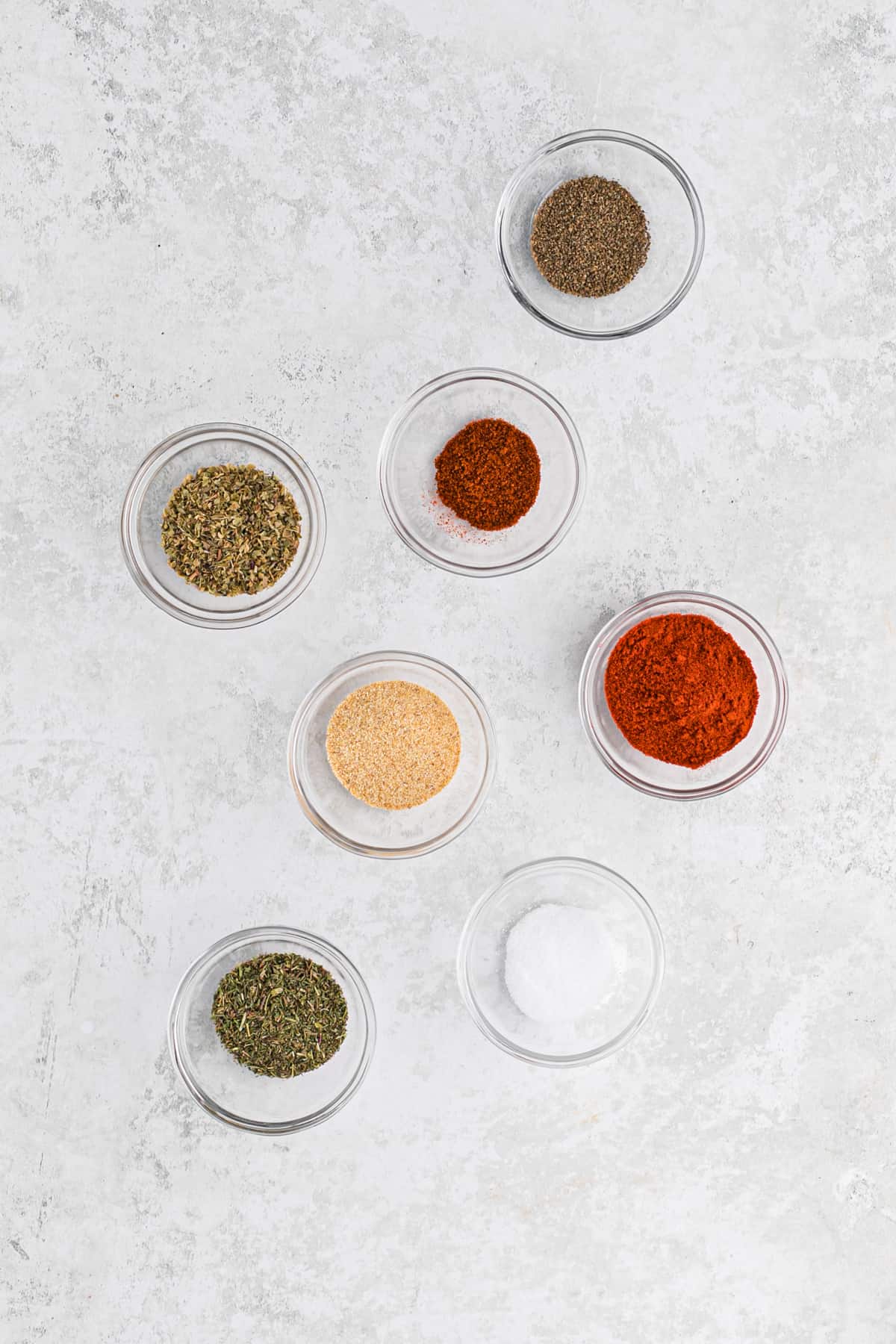
Ingredients to Make Homemade Blackened Seasoning
- Paprika: Definitely grab smoked paprika for this recipe. It amps up the smokiness and provides a TON of flavor y’all! But, regular paprika works if ya got it.
- Garlic powder: It adds a pop of savory. I like to throw in a bit of onion powder too!
- Thyme: A dash of dried time gives some fantastic earthiness. Basil also works as a sub for thyme.
- Oregano: This has a slightly bitter flavor that helps balance out those peppers like paprika and cayenne.
- Salt: I like to add mine right into the blackening seasoning mix. You can also leave it out and season up your protein directly just how ya like it.
- Celery seed: I leave out the black pepper here and use celery salt to brighten up this spice with a bit of a bright and mild peppery flavor.
- Cayenne pepper: I add just a touch of cayenne but do you boo! Add as much or as little as you like.
How to make blackened seasoning
In a small bowl, mix the paprika, garlic powder, thyme, oregano, salt, celery seed, and cayenne pepper. Start small with the salt if using, then work your way up after mixing the seasoning.
Transfer the seasoning to an airtight jar or container for storage.
Want to Save This Recipe, Boo?
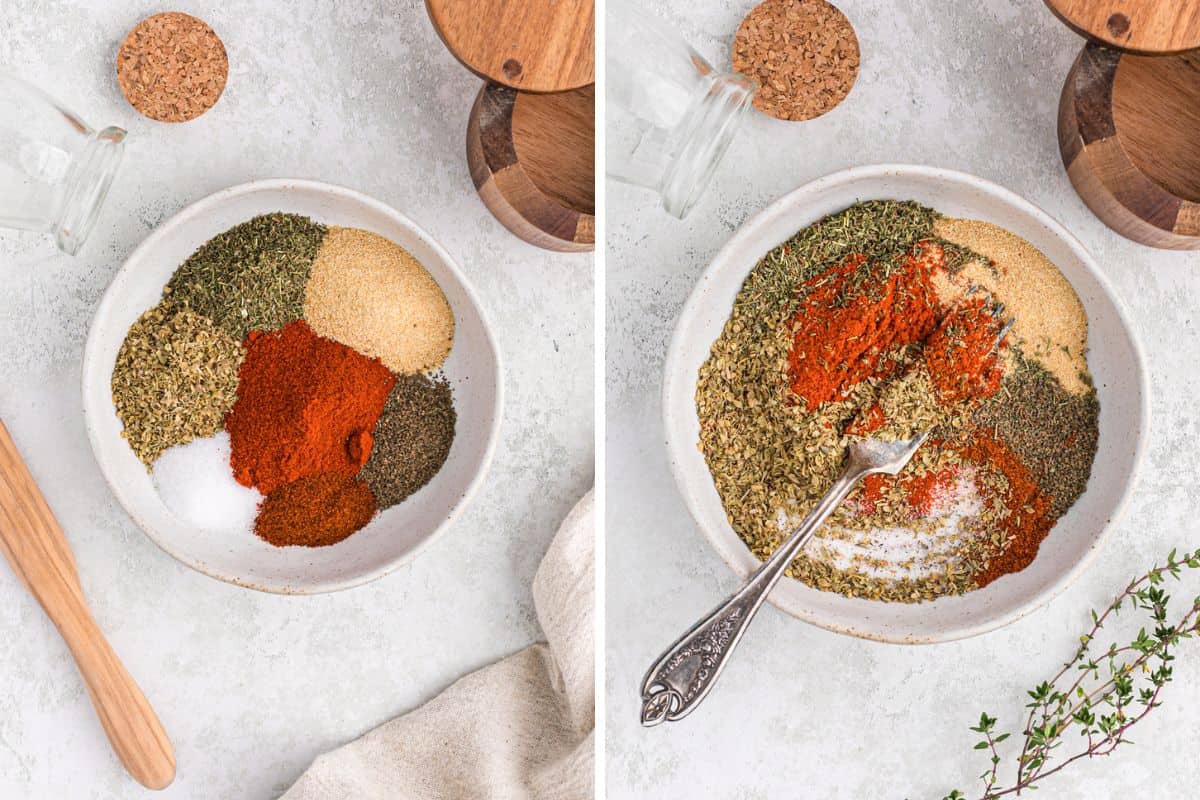
Tips for Making the Best Blackening Seasoning
- Fresh Spices: Using freshly ground spices for your seasoning can create a more intense flavor.
- Toast it up: Want to get super pro chef with it? Toast the spices in a dry skillet for a few minutes over medium heat until fragrant. Just be sure not to burn them.
- Label: When you store it up, make sure you label it with the date so you can keep track of when the batch was made.
- Pile it on: When using the blackening seasoning, make sure you lay it on. Don’t skimp. Blackening properly requires a lot of the seasoning to create that unique crust.
How to Use Cajun Blackened Seasoning
- Protein: Shrimp, salmon, chicken, catfish or any fave fish, or beef.
- Vegetables: Roasted potatoes, roasted carrots, or vegetable kabobs.
- Corn: Serve some blackened seasoning over grilled corn on the cob. Gives it a nice kick!
- Sauces: Spicy aioli or barbecue sauce.
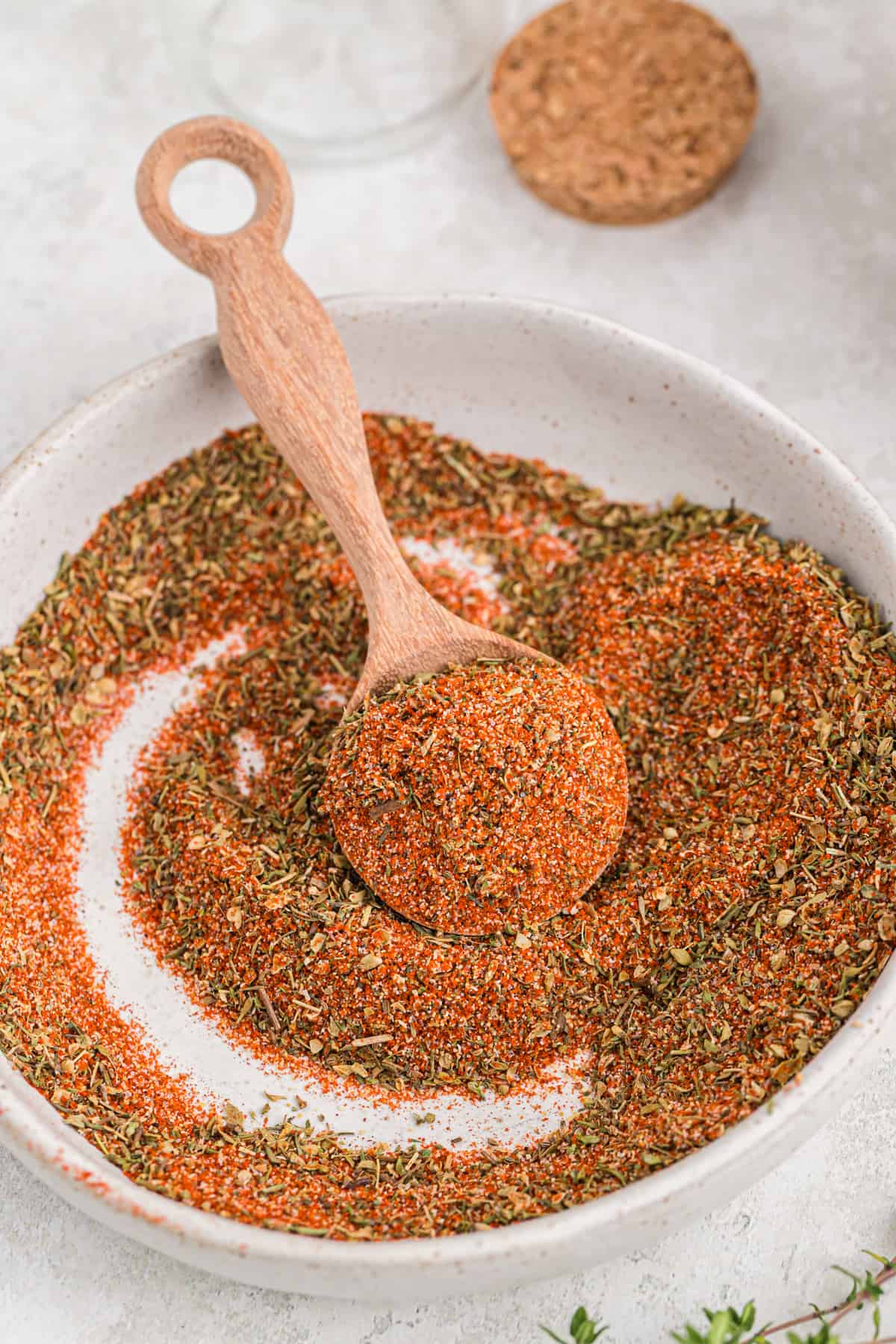
Popular Substitutions and Additions
- Herbs and spices: Try using other herbs and spices like basil, cloves, allspice, spicier peppers, or cumin.
- Sugar: To balance out the heat, mix a little sugar into the blend. I prefer brown sugar over regular sugar for a bit of that complex molasses essence.
Storage tips
Blackened seasoning will last for up to one year as long as it’s stored in an airtight container and kept in a cool, dry place (like a spice drawer). I find that spices always stay the freshest when they’re stored in glass jars. Just remember to label the jars with the date you made the seasoning.
Frequently Asked Questions
Yep, blackening spice is completely gluten-free.
All three spice blends are often used interchangeably and confused with each other, especially since they all usually contain pepper, garlic, onion, and paprika. But, there are small differences. Cajun is usually spicier with more cayenne and pepper. Creole has more herbs, like thyme and oregano, and blackened is basically a blend of Cajun and Creole seasoning.
Yep for sure. While it may not be as flavorful as if you grinded it yourself, you can just buy pre-ground at the grocery store which is what I do. If you want to grind whole spices, you can also use a mortar and pestle for a more organic rustic mouth texture.
Make sure you pat your protein dry then brush it with butter or oil and generously coat it with the seasoning. Press it into the food well before cooking.
It’s called blackening spice because the spice darkens the food when it cooks.
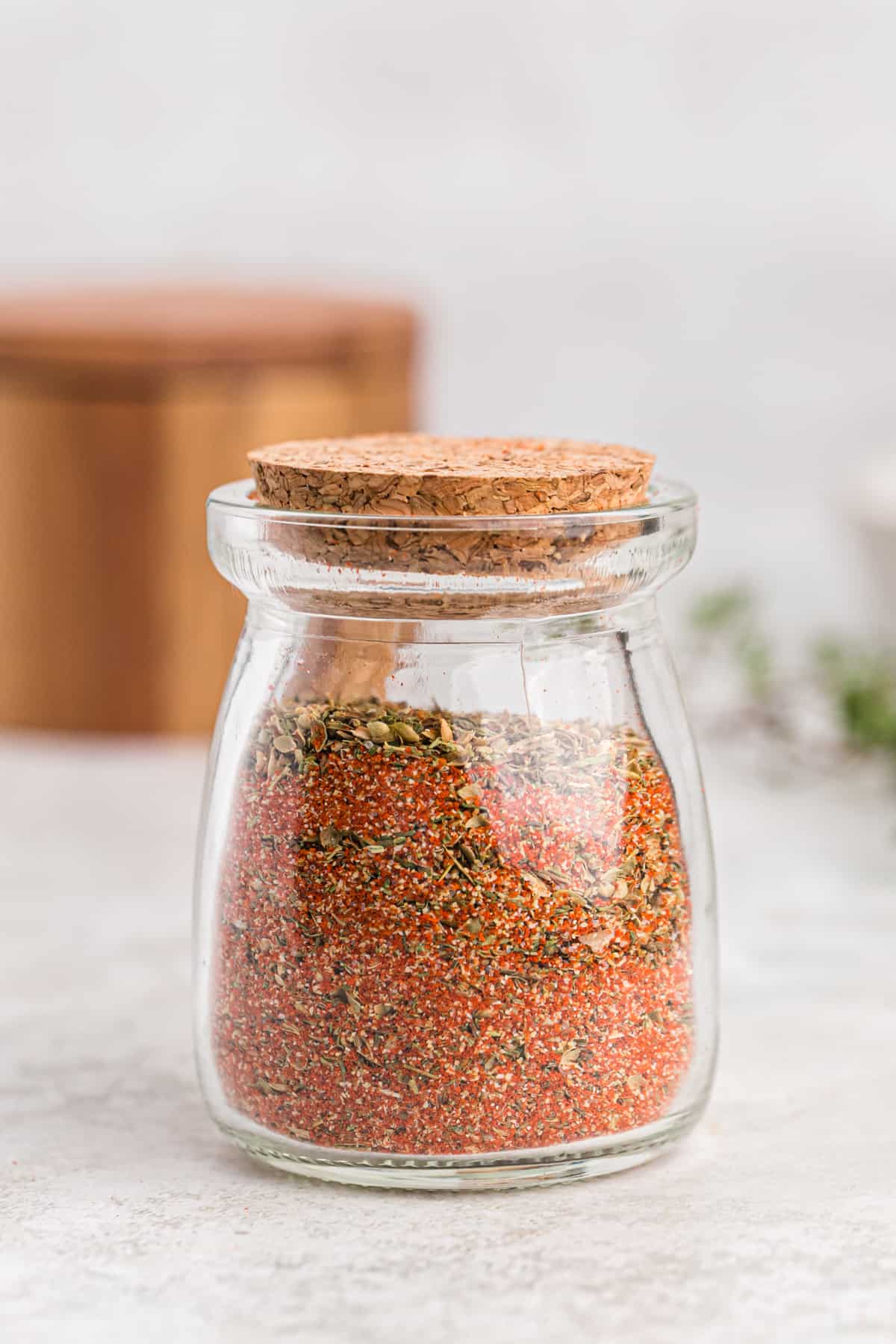
More Cajun and Creole Deliciousness
For more Cajun and Creole recipes, try some of these GC recipes:

Blackened Seasoning
Want to Save This Recipe, Boo?
Ingredients
- 2 tbsp paprika use smoked if you have it
- 1 tbsp garlic powder
- 1 tbsp thyme
- 1 tbsp oregano
- 1 tsp salt
- 1 tsp celery seed
- 3/4 tsp cayenne pepper
Instructions
- Mix together all seasonings until completely whisked and blended.
- Add to an airtight container or jar and store in a cool, dry place.
Notes
- Seasoning will last up to a year if stored in a cool, dry place in an airtight container.
Your seasoning mix was so delicious. I added it to some chicken and it was amazing. I can’t wait to try this on different meats.
Homemade seasonings are my favorite and this one is the absolute best! Thanks so much for sharing!
Homemade seasoning is amazing and I love creating my own. This looks so good I’m going to make it this weekend.
Hands down the best blackened seasoning recipe I’ve ever seen! Thanks for sharing!
This seasoning is great! We used it on salmon and it turned out beautifully. Thanks so much for the recipe! I so much rather create my own spice blends.
Homemade seasoning is always the best. Thanks for sharing